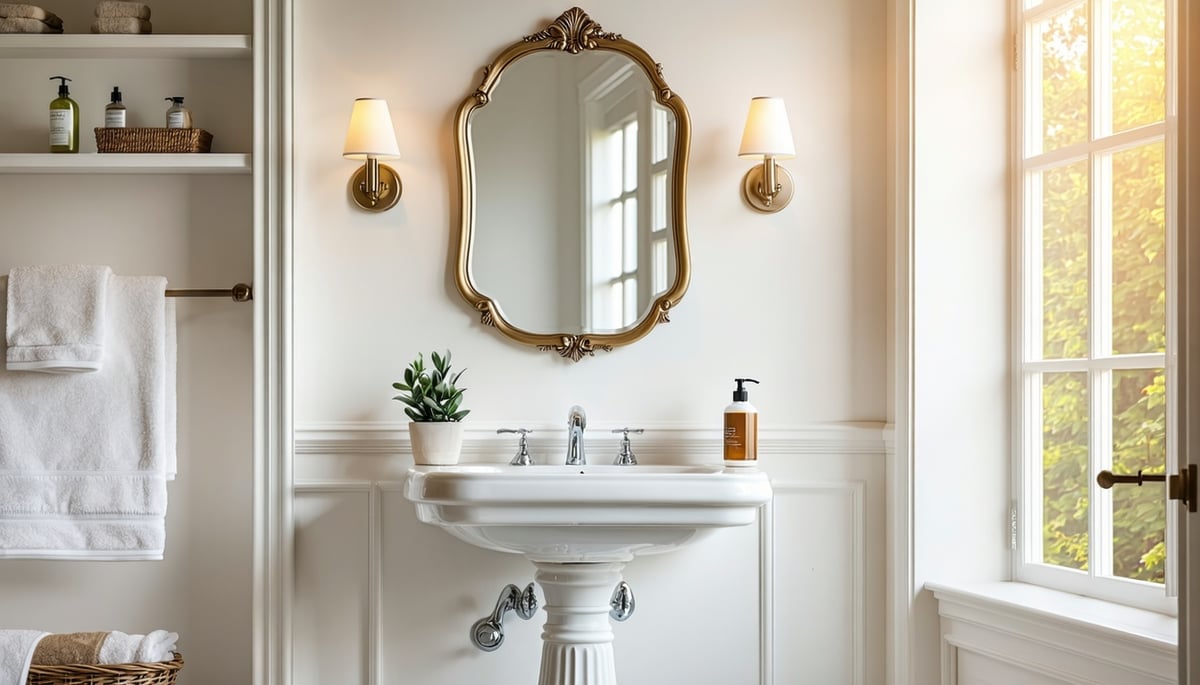Roughly 50 million Americans are seniors aged 65 and older. That’s about 15% of the U.S. population. Increasingly, seniors want to remain in their homes as they age, so they can continue to live in their own communities. That may mean some home modifications, especially when it comes to the bathroom. Here are some aging in place bathroom design ideas to help create a more accessible space — now and into the future.
Lamont Bros. is a leading Pacific Northwest design-build firm with proven expertise in aging in place remodeling, regularly helping homeowners seamlessly integrate accessibility features throughout their home renovation projects.
What is “Aging in Place?”
Aging in place is the ability to live safely, independently, and comfortably in your own home as you grow older, regardless of age or physical limitations. Rather than moving to assisted living facilities, aging in place allows seniors to remain in familiar surroundings while adapting their homes to meet changing needs.
Why Aging in Place Matters
As people age, everyday activities can become challenging and risky:
- Bathroom safety: Showers and bathtubs pose increased fall risks
- Mobility issues: Standing up from toilets becomes more difficult
- Daily tasks: Personal hygiene may require caregiver assistance
- Home accessibility: Standard home features become barriers over time
What is Aging in Place Remodeling?
Aging in place remodeling means modifying your home to support independent living as you age. This involves strategic home improvements that:
- Reduce safety hazards
- Improve accessibility
- Accommodate mobility restrictions
- Support daily living activities
Key Takeaways
✓ Aging in place lets you stay in your beloved home during your golden years
✓ Home modifications can prevent accidents and maintain independence
✓ Every person's needs are different - solutions should be customized
✓ Early planning helps identify the most impactful changes
✓ Professional assessment ensures modifications meet current and future needs
Common Aging in Place Modifications
- Bathroom safety features (grab bars, curbless showers)
- Kitchen accessibility upgrades
- Wider doorways for mobility devices
- Improved lighting throughout the home
- Non-slip flooring surfaces
- Lever-style door handles and faucets
The goal of aging in place design is identifying which home changes will empower you to live independently and safely for as long as possible.
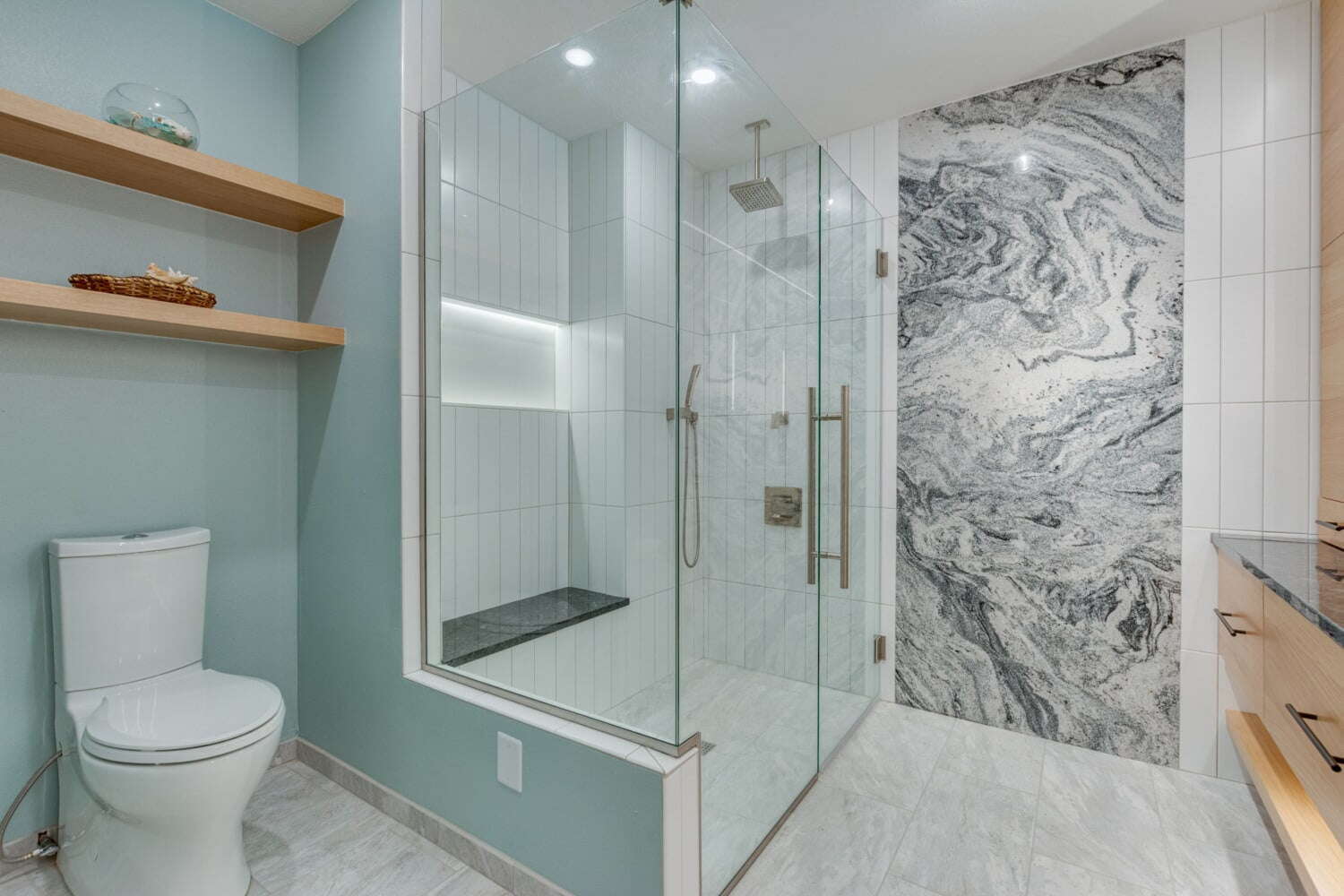
Aging in place allows seniors to stay in comfortable, familiar surroundings as they get older. A few modifications to the home can help them plan for the future, while still keeping spaces accessible for people of all ages. One key area to consider is the bathroom. Here are some helpful bathroom remodel design ideas to make the space more user-friendly as members of your family age.
Curbless shower
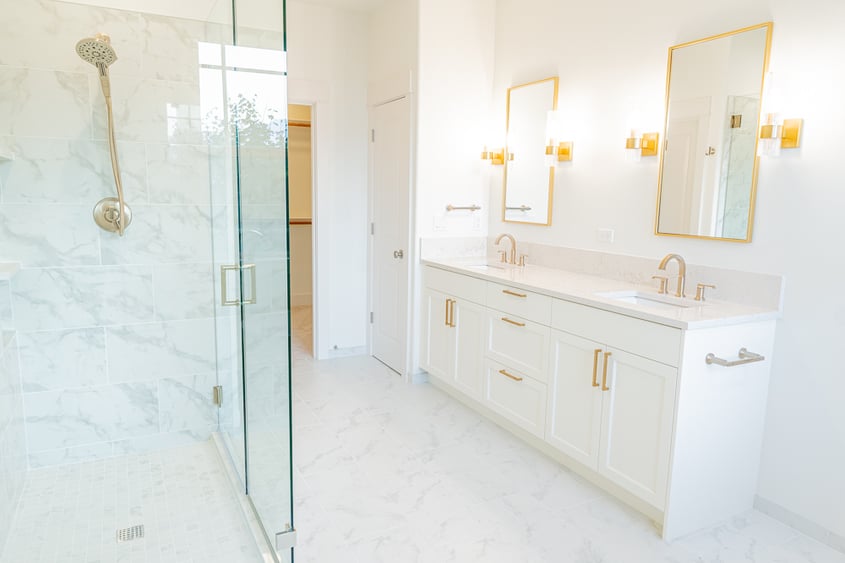
Curbless showers — also called zero-threshold showers — help eliminate tripping hazards are they don’t have any threshold or lip to step over. They are simply an extension of the bathroom, typically sectioned off from the rest of the space. To enter the shower, you simply walk straight into it. Along with reducing potential falls, they are also easily-accessible to wheelchairs.
Curbless showers are also a good replacement for large tubs which may be difficult for some to climb in and out of.
Grab bars
From slippery showers to slick floors, the bathroom can pose some serious hazards from falls. And latching on to a towel rack is often not sufficient in prevent them.

The simple solution: grab bars. First, think about where people would naturally reach out for balance in the bathroom, such as coming out of the shower or near the toilet. Then consider the bar material. They should be slip resistant and mounted securely into the wall studs.
You’ll also want to think about inside the shower. Along with grab bars, you may want to install a fold-down seat for additional support (if the shower enclosure doesn’t have a seat already.)
Non-Slip Floors
Slippery floors are perhaps the biggest bathroom hazard, especially for older members of the household who may be struggling with balance. That’s why non-slip solutions are important.
You have a few options, such as rubber flooring, adding non-slip rugs, and applying anti-slip treads or stickers. A more seamless solution is to use anti-slip tiles. Smaller tiles can also help create more grippiness.
Outside of showers and baths, always be sure to lay down mats with anti-slip surfaces.
Vanity height and installation
If your aging family member is in a wheelchair, adjusting the vanity height can be a tremendous help with it comes to using the sink. For reference, ADA accessible vanities are be 34″ or shorter. Ensuring no sharp vanity edges can also help reduce injuries as they move about the bathroom
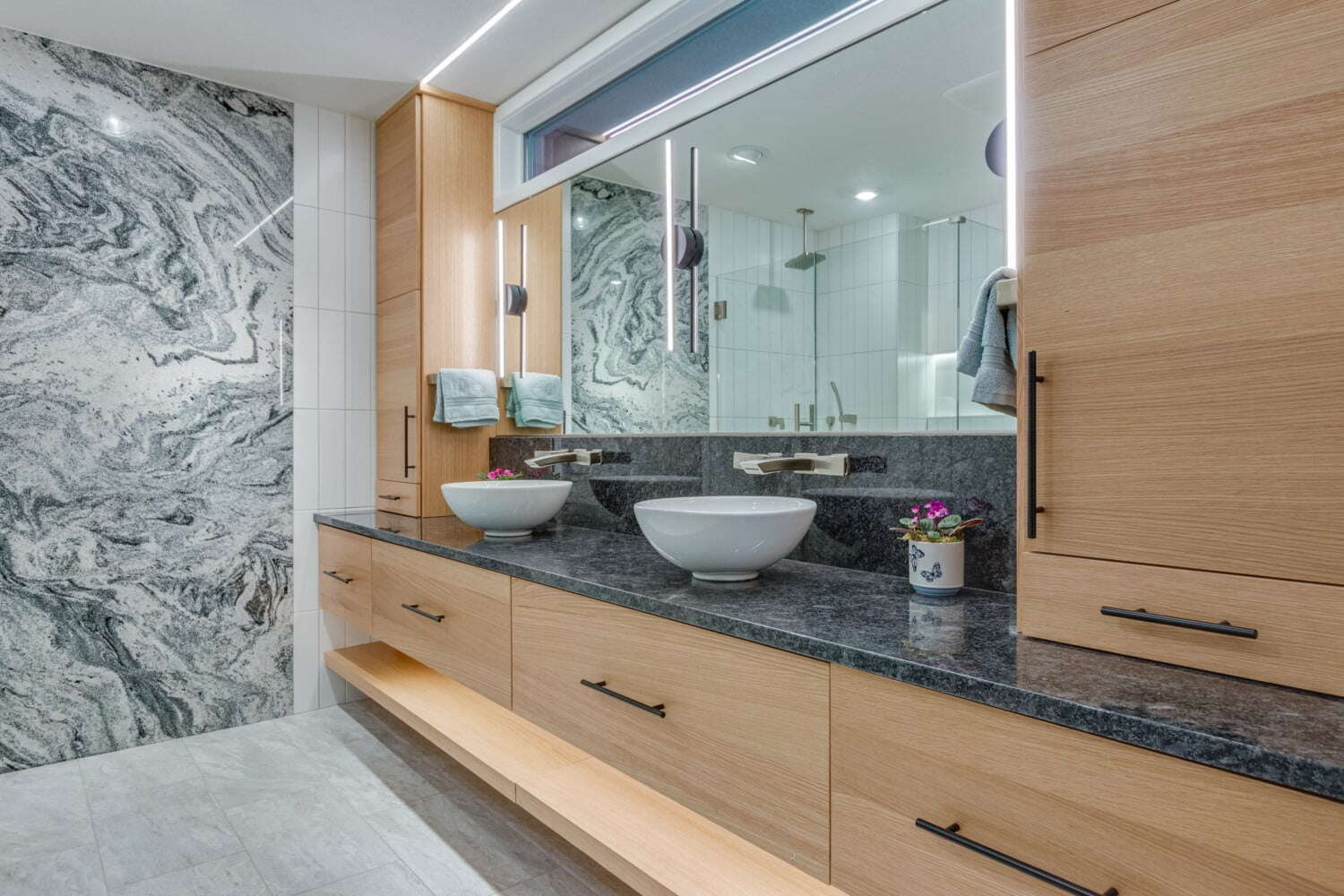
If an aging member of the household uses a walker on wheels, installing a floating vanity will allow for easier accessibility, as the wheels can slide below the vanity.
For added support, if your bathroom currently has a pedestal sink, consider swapping it for a cabinet mounted to the wall, along with non-slip adhesive strips or other non-slip surface around it.
Higher toilets
Installing higher than normal toilets is another helpful aging in place bathroom design idea. The extra height can make it easier for those less mobile to get on and off the toilet, and generally more accessible for the disabled.
One size doesn’t fit all so make sure you find one that’s right for your situation. In general, look for toilets that run three to five inches higher than standard ones. Also consider toilet seat extensions to help with accessibility. And don’t forget the grab bars to help with support.
Wide doorways
Aging in place bathroom design can also extend to your doorways. Widening your entryways can allow for easier access for someone using a walker or wheelchair. One option is to reverse the direction of the hinge so the door swings out into a hallway rather than into a smaller bathroom space. You can also install pocket doors or a barn door to eliminate the door swinging and to allow for easier opening and closing.
If you choose to redo the opening altogether, aim for a width of at least 36 inches so there’s plenty of room to navigate in and out.
Ample lighting
Another way to help prevent falls and bumps in the bathroom is to have plenty of lighting. Natural lighting is optimal as it can provide seniors with more exposure to daylight, which can help prevent sleep disorders and strengthen bones. So consider things like skylights and extra windows where appropriate.
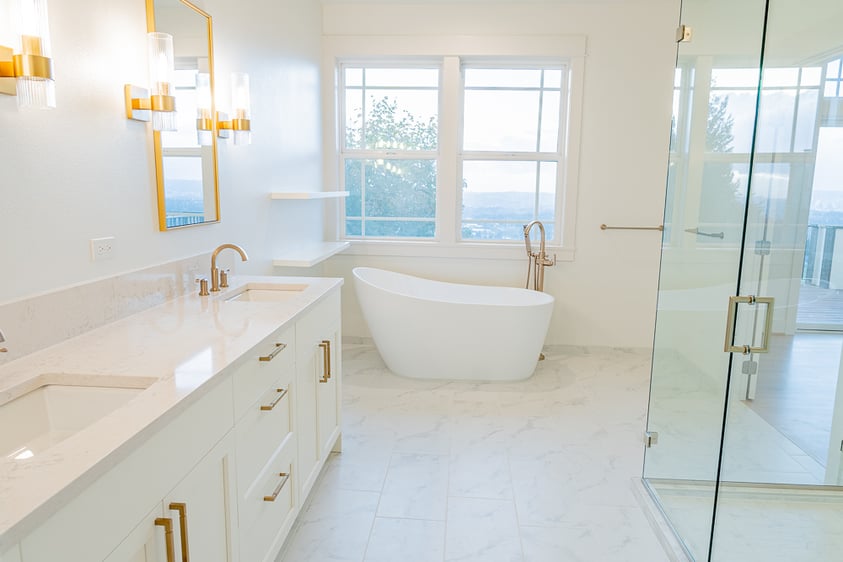
You also want to have sufficient ambient light in the space for overall mobility, as well as task lighting around areas of high use, such as the sink. To avoid too much glare, try to avoid bright lights around mirrors or other reflective surfaces and opt for softer light bulbs or dimmers.
Ready to Create Your Aging in Place Bathroom?
Creating an aging in place bathroom doesn't mean sacrificing style for safety. With thoughtful design choices like curbless showers, strategically placed grab bars, proper lighting, and accessible fixtures, you can transform your bathroom into a space that supports independence while looking beautiful for years to come.
The key is planning ahead and working with experienced professionals who understand both the technical requirements and the personal needs that come with aging in place design. Every home and every family situation is unique, which is why a personalized approach makes all the difference.
At Lamont Bros. Design & Construction, we've helped countless Portland families create bathrooms that work for every stage of life. Whether you're planning for the future or addressing immediate needs, we're here to guide you through every step of the process.
Ready to get started?
- Explore our bathroom remodeling services to see how we can transform your space
- Use our cost calculator to get an estimate for your project
- Schedule a free consultation to discuss your specific needs and goals
Don't wait until accessibility becomes an urgent need. Start planning your aging in place bathroom today, and enjoy the peace of mind that comes with a safe, beautiful, and functional space designed for life.
Frequently Asked Questions
What are the best aging in place design ideas for small bathrooms?
For small bathrooms, focus on aging in place design elements that maximize safety without requiring extensive space: grab bars strategically placed near the toilet and shower, lever faucets instead of knobs, good lighting, and non-slip flooring. A fold-down shower seat and handheld shower head can provide safety benefits without permanent space requirements.
How wide should doorways be for aging in place design?
For optimal aging in place accessibility, doorways should be at least 36 inches wide to accommodate wheelchairs and walkers comfortably. The ADA minimum is 32 inches, but 36 inches provides better clearance for mobility devices and caregivers who may need to assist.
Are curbless showers worth the investment for aging in place?
Curbless showers are excellent investments for aging in place design because they eliminate tripping hazards and provide wheelchair accessibility. They also have universal appeal, making them beneficial for all family members while significantly improving bathroom safety for seniors.
Where can I find aging in place contractors in Portland?
For aging in place remodeling in Portland, look for contractors who specialize in accessible design and understand ADA requirements. Lamont Bros. Design & Construction has extensive experience with aging in place bathroom remodels in the Portland area, working with occupational therapists to ensure modifications meet both current and future needs.
How do I choose the right flooring for aging in place design?
For aging in place design, choose flooring with a Dynamic Coefficient of Friction (DCOF) rating of at least 0.42. Smaller tiles often provide better grip than large tiles, and avoid high-gloss finishes. Consider materials that are easy to clean and maintain while providing sufficient traction when wet.



